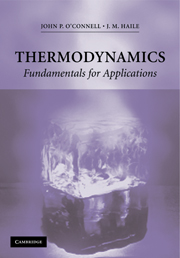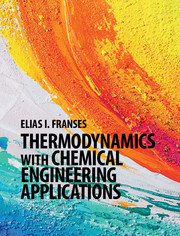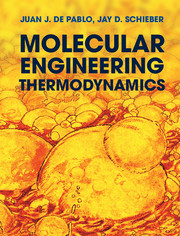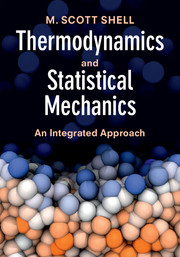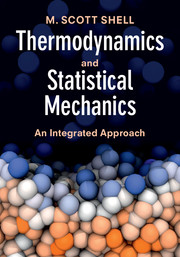Thermodynamics
Thermodynamics: Fundamentals and Applications is a 2005 text for a first graduate course in Chemical Engineering. The focus is on macroscopic thermodynamics; discussions of modeling and molecular situations are integrated throughout. Underpinning this text is the knowledge that while thermodynamics describes natural phenomena, those descriptions are the products of creative, systematic minds. Nature unfolds without reference to human concepts of energy, entropy, or fugacity. Natural complexity can be organized and studied by thermodynamics methodology. The power of thermodynamics can be used to advantage if the fundamentals are understood. This text's emphasis is on fundamentals rather than modeling. Knowledge of the basics will enhance the ability to combine them with models when applying thermodynamics to practical situations. While the goal of an engineering education is to teach effective problem solving, this text never forgets the delight of discovery, the satisfaction of grasping intricate concepts, and the stimulation of the scholarly atmosphere.
- Thorough presentation of thermodynamics fundamentals allows for any differing undergraduate preparation in the subject among students
- Includes many worked examples and homework problems along with explicit problem-solving strategies
- Helps students unify the material by emphasizing recurring patterns in thermodynamics, and relating thermodynamics to molecular theory, laboratory experiment, and engineering practice
Reviews & endorsements
"O'Connell and Haile are weathered experts in the field, and in teaching thermodynamics. This clearly shows in their new textbook, which is primarily intended for beginning graduate students in chemical engineering. Their experience is visible through the special care they take to gradually build up the subject with the utmost attention to details…As excellent writers, they are able to convey their deep understanding to us, and their book should make many students enthusiastic about thermodynamics. To bring classical thermodynamics to life in such an appealingly vivid, yet also mathematically rigorous, way is an accomplishment that makes this book highly recommendable."
Angewandte Chemie
"[T]he book is a well written text for students of a classical chemical thermodynamics. It is easy to read and has a clear explanation of the derivation and usefulness and is well worth considering."
Chemistry in Australia
Product details
June 2011Paperback
9780521588188
674 pages
244 × 170 × 34 mm
1.06kg
Available
Table of Contents
- Introduction
- Part I. The Basics:
- 1. Primitives
- 2. The first and second laws
- 3. Fundamental relations
- Part II. Single-Phase Systems:
- 4. Properties relative to ideal gases
- 5. Properties relative to ideal solutions
- 6. Relations among relations
- Part III. Multiphase and Reacting Systems:
- 7. Transfers, transformations, and equilibria
- 8. Criteria for observability
- 9. Phase diagrams for real systems
- Part IV. Engineering Calculations:
- 10. Options for equilibrium calculations
- 11. Elementary computational procedures
- 12. Selected applications
- Afterword
- Appendices: A. Tools from the calculus
- B. Elements of linear algebra
- C. Solutions to cubic equations
- D. Vapor pressures of selected fluids
- E. Model parameters for G excess
- F. A stability condition for binaries
- G. Notation in variational calculus
- H. Triangular diagrams
- I. Lagrange multipliers
- J. NRTL models
- K. Simple algorithms for binary VLLE
- Notation
- Index.

